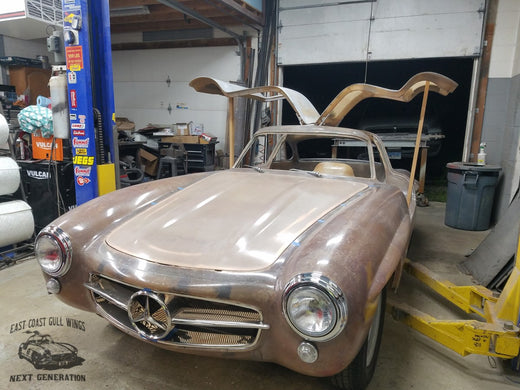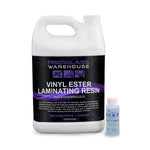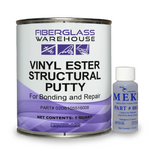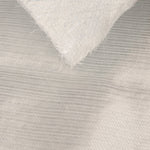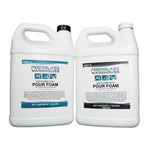You have no items in your shopping cart.
There are many factors that go into choosing whether polyester or epoxy resin is best for your project. Some of those factors depend on what your project will be, the size of the project you will be doing and what will be used for the final layer. To help you...
Terri with WaterSong Creek Creations does it again with these beautiful beach themed crushed glass hearts. We love seeing what she comes up with using our ProGlas 1000 Tabletop Epoxy Resin. These would be a fun Valentine's Day gift or an every day decoration. If you would like to read...
Looking for a creative gift idea or a stunning Christmas decoration to add some holiday magic to your home? We've got you covered! This fun and easy tutorial from WaterSong Creek Creations will show you how to make eye-catching crushed glass Christmas trees using ProGlas 1000 Tabletop Epoxy Resin. Whether...
Ever wondered how to craft your own mesmerizing epoxy resin masterpiece? Today, Terri from WaterSong Creek Creations is here to show you exactly how it’s done! Using ProGlas 1000 Table Top/Art Resin and vibrant pigments, she brings a stunning palm tree to life in an easy-to-follow demonstration. Whether you're...
Have you ever looked at the vibrant colors of fall leaves and wished you could preserve their beauty forever? Well, you can! We absolutely love how this stunning fall leaves tray turned out using our ProGlas 1000 Tabletop Epoxy Resin. But here's the inspiring part—Terri didn’t get it right the...
WaterSong Creek Creations is back with another incredible project, and this time, Terri is taking us through the step-by-step process of creating a beautiful round ocean tray using our ProGlas 1000 Tabletop Epoxy Resin. Whether you're a seasoned crafter or just starting out with epoxy resin art, this video tutorial is...
One of our talented customers, Terri from Watersong Creek Creations, recently shared a project she brought to life using our Proglas 1000 Epoxy Resin. Her Seascape Window is beautiful and showcases the versatility and brilliance of our epoxy resin. If you would rather read this tutorial, you can read the...
Ever wondered how to make your boat more buoyant or fill those tricky voids effortlessly? With Fiberglass Warehouse Polyurethane Boat Pour Foam, it’s easier than you think! From mixing to rising to curing, this two-part foam is the go-to solution for boat owners and DIY enthusiasts. Ready to see just...
Are you a DIYer or hobbyist who loves to take on projects that involve gel coat? Both first time users and experienced professionals can face common problems such as cracks, fisheyes, pinholes, sags, and runs. These issues can not only be frustrating but also lead to subpar results. But fear not!...
2lb Polyurethane Pour Foam Instructions 2 lb. urethane pour foam is a two-part liquid that is great for flotation and insulation as well as filling voids and gaps. It is often used under boat decks. It creates a closed cell structure that resists water absorption. Needed supplies and tools: Graduated...
Creating a river table takes craftsmanship, patience, and the perfect epoxy resin—and our customers keep impressing us with their creativity and talent! Check out these beautiful river tables made with our Proglas 1000 epoxy resin. The top photo is a completed river table and the bottom photo is a river table still in...
When it comes to custom car projects, creativity knows no bounds—and Al from East Coast Gull Wings just proved that with his incredible work on a classic Gull Wing. Using our fiberglass chopped strand mat, ISO polyester resin, vinyl ester resin, and Partall #10, Al crafted stunning custom parts that...














